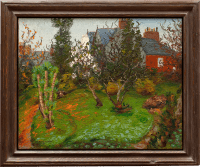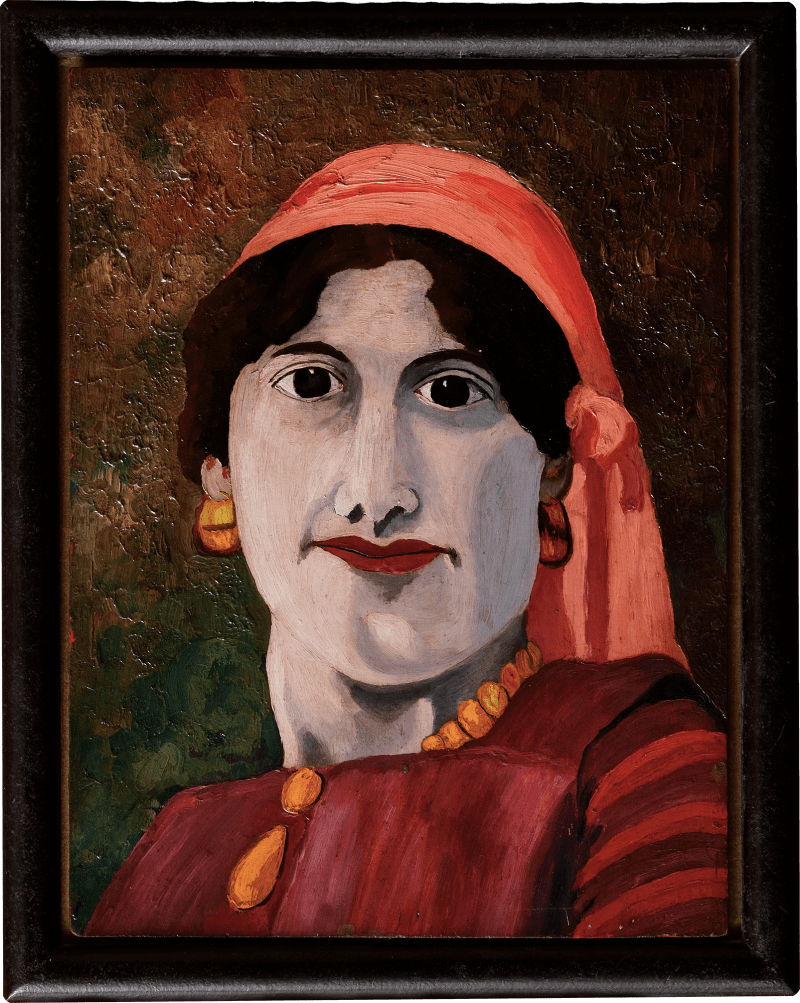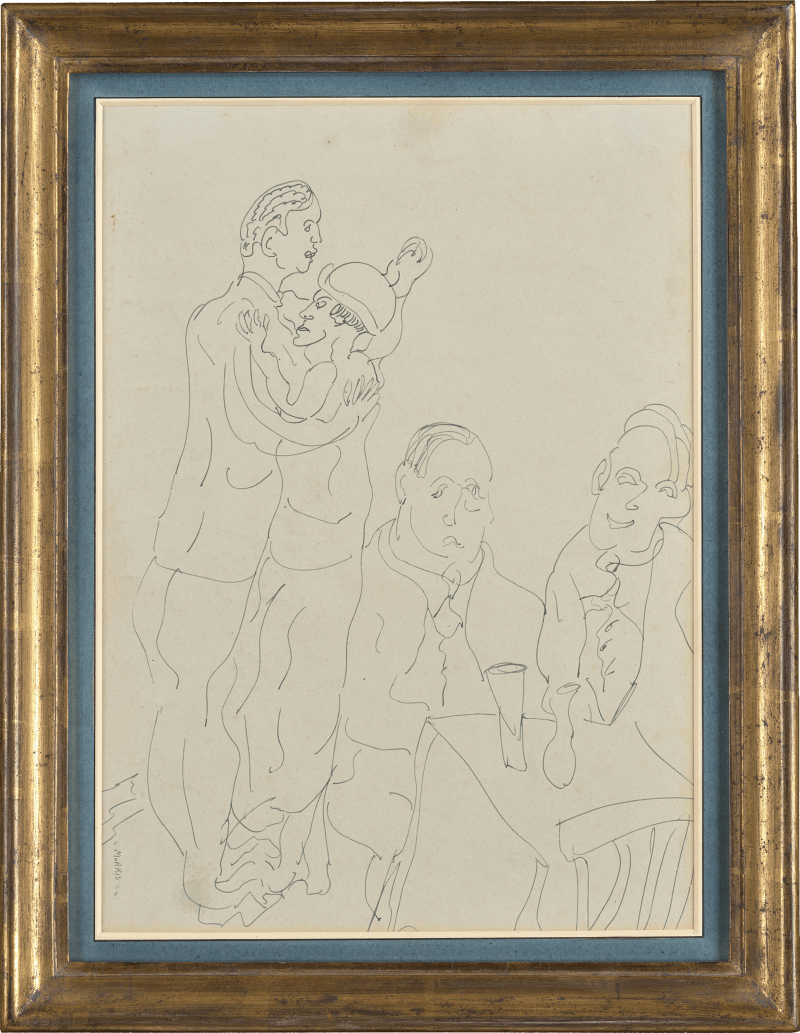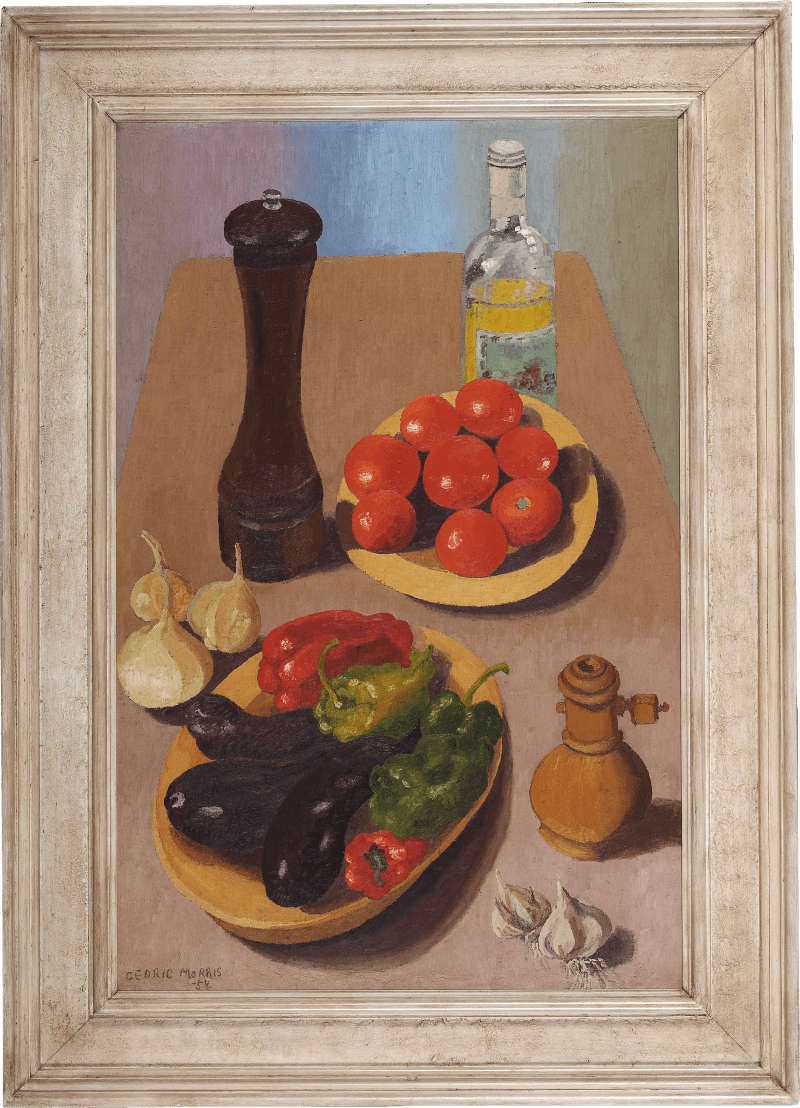‘The gardener, like the painter, selects, discards and rearranges, revising as he goes.’[1]
– Christopher Neve
Gardening was integral to the artistic career of artist plantsman, Cedric Morris. He communicated his commitment to gardening through oil painting and honoured its seasonal shifts through the permanency of paint. In homologous conversation, his gardening practice informed his painting, and his paintings informed his gardening practice.
This landscape depicts the garden of Myrtle Cottage, Newlyn, Cornwall. During the early twentieth century, Myrtle Cottage was set up as a home for the female students of Stanhope Forbes’s School of Painting and Drawing - artists who lived there include Dod Procter, who painted an interior scene of the Kitchen, now in the collection of the Tate.
At this date, Myrtle Cottage was home to Morris’s sister, Nancy, and was painted whilst he was visiting her in November 1947. That Autumn, Nancy had struggled with heartbreak which compelled Morris to visit her. In a letter...
‘The gardener, like the painter, selects, discards and rearranges, revising as he goes.’[1]
– Christopher Neve
Gardening was integral to the artistic career of artist plantsman, Cedric Morris. He communicated his commitment to gardening through oil painting and honoured its seasonal shifts through the permanency of paint. In homologous conversation, his gardening practice informed his painting, and his paintings informed his gardening practice.
This landscape depicts the garden of Myrtle Cottage, Newlyn, Cornwall. During the early twentieth century, Myrtle Cottage was set up as a home for the female students of Stanhope Forbes’s School of Painting and Drawing - artists who lived there include Dod Procter, who painted an interior scene of the Kitchen, now in the collection of the Tate.
At this date, Myrtle Cottage was home to Morris’s sister, Nancy, and was painted whilst he was visiting her in November 1947. That Autumn, Nancy had struggled with heartbreak which compelled Morris to visit her. In a letter to his long-term partner, Arthur Lett-Haines, Morris describes the relief he found in being able to ‘save myself from worrying about her at a distance’.[2]
With a spirit of observation and direct honesty, Morris successfully captures the peaceful essence of this quiet space. The textures of the garden are visually translated through Morris’ impasto application of paint, a technique that enables Morris to unite differing forms, textures, and colours to create a unified whole. In this instance, the naturally rugged shapes of the garden merge effortlessly with the solid structure of the building in the background. Art critic and writer, Christopher Neve, aligns Morris’ art practise with that of his horticultural activities: ‘Look at his landscapes. They seem to have been pulled from the earth like vegetables.’[3] This rugged honesty is embodied in the present landscape.
[1] Neve, C. (2020) Unquiet Landscape: Places and Ideas in 20th Century British Painting. London: Thames and Hudson, p. 71.
[2] Morris, C. (undated) Letter to Arthur Lett-Haines. Tate Gallery Archives, [8317.1.4.127].
[3] Neve, C. (2020) Unquiet Landscape: Places and Ideas in 20th Century British Painting. London: Thames and Hudson, p. 69.













